Do you have a question about the Jeep Renegade 2018 and is the answer not in the manual?
Instructions on accessing the complete Owner's Manual via the Mopar website.
Explains directional instructions and figure presentation within the manual.
Warns about higher rollover risk for utility vehicles and emphasizes safe driving.
Warns that vehicle alterations can affect safety and lead to accidents.
Explains the key fob, remote keyless entry, and keyless ignition systems.
Details the operation of the ignition switch and keyless entry system.
Instructions on how to use the remote start system with the key fob.
Explains the Sentry Key Immobilizer system and its general information.
Details on how to arm and disarm the vehicle security alarm system.
Information on keyless entry, passive entry, and child locks for doors.
Details about heated seats and split rear seats, including their operation.
Information on adjusting and using head restraints for crash safety.
Describes the tilt and telescoping steering column features.
Information on folding and heated mirrors, and their operation.
Covers headlights, DRLs, high beams, fog lights, and parking lights.
Explains the operation of windshield wipers and washers, including rain sensing.
Details automatic climate control overview, functions, and operating tips.
Covers power window controls, auto-down, auto-up features, and wind buffeting.
Information on operating the power My Sky sunroof, including open/close and venting.
Instructions on how to open and close the vehicle's hood.
How to unlock, open, and close the liftgate, including emergency opening.
Details about power outlets and power inverters.
Information on the 115-volt, 150-watt power inverter outlet.
How to use the instrument cluster display controls for vehicle information.
Procedure to reset the oil change indicator system.
Explains how to use and reset the trip computer function.
Information on warning lamps and indicators that alert the driver to potential issues.
Details the Air Bag Warning Light and its function during startup and driving.
Monitors brake functions, indicating issues with fluid level, parking brake, or ABS/ESC.
Illuminates when a door is ajar or not fully closed.
Warns of a fault in the electric power steering system.
Informs about problems with the electronic throttle control system.
Illuminates when the hood is open or not fully closed.
Illuminates when the liftgate is open or not fully closed.
Indicates low engine oil pressure and warns to stop the vehicle.
Alerts to a failure in the oil pressure sensor.
Warns of high engine oil temperature.
Indicates when the driver or passenger seat belt is unbuckled.
Indicates a transmission fault and requires dealer service.
Details ABS, Audio System Failure, Electronic Park Brake, Icy Road Condition, and Low Fuel warnings.
Indicates the Stop/Start system is not functioning properly.
Alerts the driver to low tire pressure or system malfunction.
Explains the TPMS telltale light and messages indicating low tire pressure.
What happens when a TPMS system fault is detected.
How TPMS functions with a matching full-size spare tire.
Details on Anti-Lock Brake System (ABS) and Electronic Brake Control System.
Information on Blind Spot Monitoring, Forward Collision Warning (FCW), and TPMS.
Covers seat belt systems, SRS airbags, and child restraints.
Advice on transporting passengers and pets, and general safety checks.
Explains how BAS optimizes braking during emergency maneuvers.
Describes the HSA system that helps prevent rollback on inclines.
Details the three modes of active safety systems: ESC On, Partial Off, and Full Off.
Explains the Partial Off mode for driving in deep snow, sand, or gravel.
How Selec-Terrain combines vehicle control systems for optimal performance on different terrains.
Describes the ERM system that anticipates and prevents wheel lift.
Explains how DST integrates with ESC and power steering for enhanced safety.
HDC is for low-speed off-road driving to maintain vehicle speed on hills.
Explains the BSM system using radar sensors to detect vehicles in blind spots.
FCW system provides warnings and may apply brake jerk for potential frontal collisions.
The TPMS warns the driver of low tire pressure based on recommended cold placard pressure.
How TPMS functions with a matching full-size spare tire.
Lists the main components of the occupant restraint system.
Steps to minimize harm from deploying airbags and child safety.
Importance of buckling up and how seat belts save lives.
Information on airbags and SRS components.
Guidelines for properly restraining children in the vehicle.
Details the BeltAlert feature to remind occupants to buckle their seat belts.
How BeltAlert status changes if seat belts are unbuckled or passenger seat unoccupied.
Information on lap/shoulder belts and their locking retractors.
Procedure to untwist a twisted lap/shoulder belt.
How to adjust the upper shoulder belt anchorage for comfort and safety.
Explains pretensioning devices that remove slack from seat belts during a collision.
Explains the ALR system used to secure child restraint systems.
Steps to engage the automatic locking mode for seat belts.
Steps to disengage the automatic locking mode.
Explains the advanced multistage front airbag system.
Provides enhanced protection during frontal impact with seat belts and airbags.
Details Supplemental Seat-Mounted Side Air Bags (SABs) and their function.
Lists components of the airbag system, including ORC, warning lights, and sensors.
What may occur after an airbag deployment, such as abrasions or smoke-like particles.
Explains the purpose of the Event Data Recorder in crash situations.
Explains the purpose of the Event Data Recorder in crash situations.
Warning about unrestrained children becoming projectiles in a collision.
Recommendations for rear-facing child restraints (infant carriers and convertible seats).
A 5-step test to determine if a child can use the vehicle's seat belt alone.
Warning about improper child restraint anchoring leading to injury.
Warning against using LATCH in the center position; use seat belt and tether anchor instead.
How to find the upper tether anchorages behind each rear seating position.
How to secure child restraints using lap belts or the lap belt portion of a lap/shoulder belt.
Advice on transporting passengers and pets, and general safety checks.
Warning against transporting passengers in the cargo area.
Regular checks for seat belts and the air bag warning light.
Inspecting tires for wear, damage, and proper inflation.
Checking operation of brake lights, exterior lights, and indicator lights.
Checking door latches for proper closing, latching, and locking.
Checking under the vehicle for fuel, coolant, oil, or other fluid leaks.
Steps for starting the engine, including seat adjustment and seat belt usage.
How to shut off the engine, including automatic shut-down and accessory power.
Guidelines for breaking in the engine and drivetrain during the initial period.
Explains the Electric Park Brake system, its application, release, and auto park features.
How the Auto Park Brake feature can be programmed and bypassed.
Explains the SafeHold feature that automatically applies the park brake if the vehicle is unsecured.
Recommends having brakes serviced by an authorized dealer and entering Brake Service Mode.
Explains manual transmission operation, including shifting and recommended speeds.
Instructions on how to shift gears in the manual transmission, including recommended shift speeds.
Guidance on downshifting for brake preservation and acceleration.
Details the nine-speed automatic transmission, its gear ranges, and operation.
Explains the operation of PARK (P), REVERSE (R), NEUTRAL (N), and DRIVE (D) gear ranges.
Explains AutoStick for manual shift control, maximizing engine braking, and improving performance.
Explains how the system activates Limp Home Mode if a transmission fault is detected.
How to use the Speed Control (cruise control) system.
Provides visual and audible indications of distance to rear obstacles.
Information about the LaneSense system and its operation.
Explains the Jeep Active Drive (4WD) and Active Drive Low (4WD Low) systems.
How Selec-Terrain combines vehicle control systems for optimal performance on different terrains.
How to rotate the Selec-Terrain knob to select desired modes (AUTO, SNOW, SAND, MUD, ROCK).
Information on the Capless Fuel System and opening the fuel door.
Provides maximum trailer weight ratings for different engines and drivetrain configurations.
Guidelines for towing the vehicle behind another vehicle.
How to use the hazard warning flasher switch.
Lists interior bulb numbers for replacement.
Warnings about replacing fuses and the importance of using the correct rating.
Location of the engine compartment fuse panel and a table of fuses.
Location of the body computer controller and a list of mini fuses.
Location of the rear cargo fuse/relay distribution units and lists of fuses.
Covers warnings and instructions for changing a tire.
Location of the jack and tools, and how to remove them.
Steps to prepare the vehicle for jacking, including parking and hazard lights.
Detailed instructions on how to safely use the jack to raise the vehicle.
Step-by-step instructions for installing a road tire.
Information on the Tire Service Kit, its components, and operation for emergency tire repair.
Important precautions and conditions to avoid when using the Tire Service Kit.
Procedures for jump-starting a discharged battery.
Refers to the emergency refueling procedure.
Actions to take to reduce overheating potential and what to do if the engine overheats.
Procedure to temporarily move the gear selector if it's stuck in PARK.
How to free the vehicle if it becomes stuck in mud, sand, or snow using a rocking motion.
Procedures for towing a disabled vehicle using a commercial towing service.
Recommendations for towing FWD vehicles, including using a flatbed or tow dolly.
Requirements for towing 4WD vehicles, emphasizing all wheels off the ground.
Location and recommended use of emergency tow hooks.
Information about the Enhanced Accident Response System.
Explains the purpose of the Event Data Recorder in crash situations.
Details the automatic oil change indicator system and maintenance reminders.
Identifies components in the engine compartment for 1.4L Turbo and 2.4L engines.
Information on expert service provided by authorized dealers.
How to clean and maintain windshield wiper blades.
When to seek professional help for raising the vehicle.
Comprehensive tire safety information, including markings, pressures, and loading.
Explains the various markings on a tire sidewall, including DOT, size, and load/speed ratings.
Covers tire markings, identification numbers, terminology, pressures, and loading.
Information on All Season, Summer, and Snow tires.
Requirements and recommendations for using snow tires.
How to clean wheels and wheel trim to maintain luster and prevent corrosion.
Recommendations for using tire chains, including size and installation.
Benefits of timely tire rotation for wear, traction, and ride quality.
Explains the DOT tire grading system for treadwear, traction, and temperature.
Explains the Treadwear grade as a comparative rating of tire wear.
Describes Traction grades (AA, A, B, C) measuring tire's ability to stop on wet pavement.
Explains Temperature grades (A, B, C) related to tire's heat resistance.
Precautions to observe if the vehicle remains stationary for more than a month.
How to preserve the vehicle's bodywork through washing and cleaning.
Information on cleaning and maintaining interior surfaces.
How to clean fabric upholstery and carpeting using Mopar Total Clean.
How to clean seat belts and when they need replacement.
How to clean interior plastic and coated surfaces.
Recommendations for cleaning and preserving leather upholstery.
How to clean all glass surfaces, including those with defrosters or antennas.
How to find the chassis number (VIN) on the vehicle.
Proper lug nut/bolt torque is essential for safe wheel mounting.
Recommends octane ratings for 1.4L Turbo and 2.4L engines.
Information on TOP TIER Detergent Gasoline and avoiding fuel system cleaning agents.
General information about E-85 fuel for Flexible Fuel vehicles.
Lists approximate fluid capacities for fuel, engine oil, and cooling system in U.S. and Metric.
Details fluids and lubricants recommended for engine and chassis components.
Highlights various authentic Mopar accessories for exterior and interior.
Information on vehicle connectivity, security features, and software updates.
General tips for using vehicle controls, including steering wheel audio controls and reception.
Details SiriusXM Guardian services, including SOS calls, remote access, and vehicle tracking.
Overview of the Uconnect 3 system with a 5-inch display.
Overview of the Uconnect 4 system with a 7-inch display.
Overview of the Uconnect 4C/4C NAV system with an 8.4-inch display.
How to adjust audio settings like Balance/Fade, Equalizer, and Speed Adjusted Volume.
Operation of the Uconnect 4C NAV radio.
How to select radio bands (AM, FM, SXM) and store presets.
How to use Android Auto with Uconnect to project smartphone apps.
Notes on cellular coverage and data usage for Google Maps with Android Auto.
How to use Apple CarPlay seamlessly with Uconnect for iPhone features.
Explains how to use Apple CarPlay with Uconnect for phone, music, messages, and maps.
How to use the phone features with CarPlay via Siri.
Accessing music libraries via CarPlay.
Sending and receiving text messages using Siri with CarPlay.
Using Apple Maps for navigation with CarPlay.
Accessing and adjusting various Uconnect system settings.
How to connect external devices via USB or AUX jack.
Information applicable to Uconnect 4C NAV systems for navigation.
How to find points of interest using the navigation system.
How to search for a destination by spelling its name.
How to enter a navigation destination using voice commands.
How to add, save, or delete Home locations in the navigation system.
How to add a stop to an existing navigation route.
How to take a detour if the current route is not reasonable.
Information on SiriusXM Traffic Plus for real-time traffic data.
SiriusXM Travel Link services like fuel prices, movie listings, sports scores, and weather.
Information on Uconnect Phone features, including Bluetooth hands-free calling.
Steps for pairing a mobile phone wirelessly with the Uconnect system.
Details specific SiriusXM Guardian services like SOS Call, Theft Alarm, and Remote Start.
How to use the SOS Call button for emergency assistance.
How the Theft Alarm Notification feature works via email or text.
Steps to take if the vehicle is stolen, and how SiriusXM Guardian can help.
How to use the Wi-Fi hotspot feature and trial period.
Tips for improving Bluetooth performance and troubleshooting connection issues.
Reasons why a mobile phone might not reconnect and how to fix it.
Steps to troubleshoot pairing issues with mobile phones.
How Uconnect announces and reads incoming text messages.
Common voice commands for Uconnect system functions.
Operation of the Uconnect 4 radio with a 7-inch display.
How to select radio bands (AM, FM, SXM) and store presets.
How to use Android Auto with Uconnect to project smartphone apps.
Tips for preparing for service appointments and making requests.
Manufacturer's and dealer's commitment to customer satisfaction and how to contact them.
Contact information for FCA US LLC Customer Center.
Contact information for FCA Canada Inc. Customer Center.
How hearing or speech impaired customers can communicate with the manufacturer.
Information about purchased service contracts and manufacturer's responsibility.
Refers to the Warranty Information Booklet for terms and provisions.
Information on Mopar fluids, lubricants, parts, and accessories.
How to report safety defects to NHTSA and FCA US LLC.
How to purchase copies of manuals and other publications.
Instructions on accessing the complete Owner's Manual via the Mopar website.
Explains directional instructions and figure presentation within the manual.
Warns about higher rollover risk for utility vehicles and emphasizes safe driving.
Warns that vehicle alterations can affect safety and lead to accidents.
Explains the key fob, remote keyless entry, and keyless ignition systems.
Details the operation of the ignition switch and keyless entry system.
Instructions on how to use the remote start system with the key fob.
Explains the Sentry Key Immobilizer system and its general information.
Details on how to arm and disarm the vehicle security alarm system.
Information on keyless entry, passive entry, and child locks for doors.
Details about heated seats and split rear seats, including their operation.
Information on adjusting and using head restraints for crash safety.
Describes the tilt and telescoping steering column features.
Information on folding and heated mirrors, and their operation.
Covers headlights, DRLs, high beams, fog lights, and parking lights.
Explains the operation of windshield wipers and washers, including rain sensing.
Details automatic climate control overview, functions, and operating tips.
Covers power window controls, auto-down, auto-up features, and wind buffeting.
Information on operating the power My Sky sunroof, including open/close and venting.
Instructions on how to open and close the vehicle's hood.
How to unlock, open, and close the liftgate, including emergency opening.
Details about power outlets and power inverters.
Information on the 115-volt, 150-watt power inverter outlet.
How to use the instrument cluster display controls for vehicle information.
Procedure to reset the oil change indicator system.
Explains how to use and reset the trip computer function.
Information on warning lamps and indicators that alert the driver to potential issues.
Details the Air Bag Warning Light and its function during startup and driving.
Monitors brake functions, indicating issues with fluid level, parking brake, or ABS/ESC.
Illuminates when a door is ajar or not fully closed.
Warns of a fault in the electric power steering system.
Informs about problems with the electronic throttle control system.
Illuminates when the hood is open or not fully closed.
Illuminates when the liftgate is open or not fully closed.
Indicates low engine oil pressure and warns to stop the vehicle.
Alerts to a failure in the oil pressure sensor.
Warns of high engine oil temperature.
Indicates when the driver or passenger seat belt is unbuckled.
Indicates a transmission fault and requires dealer service.
Details ABS, Audio System Failure, Electronic Park Brake, Icy Road Condition, and Low Fuel warnings.
Indicates the Stop/Start system is not functioning properly.
Alerts the driver to low tire pressure or system malfunction.
Explains the TPMS telltale light and messages indicating low tire pressure.
What happens when a TPMS system fault is detected.
How TPMS functions with a matching full-size spare tire.
Details on Anti-Lock Brake System (ABS) and Electronic Brake Control System.
Information on Blind Spot Monitoring, Forward Collision Warning (FCW), and TPMS.
Covers seat belt systems, SRS airbags, and child restraints.
Advice on transporting passengers and pets, and general safety checks.
Explains how BAS optimizes braking during emergency maneuvers.
Describes the HSA system that helps prevent rollback on inclines.
Details the three modes of active safety systems: ESC On, Partial Off, and Full Off.
Explains the Partial Off mode for driving in deep snow, sand, or gravel.
How Selec-Terrain combines vehicle control systems for optimal performance on different terrains.
Describes the ERM system that anticipates and prevents wheel lift.
Explains how DST integrates with ESC and power steering for enhanced safety.
HDC is for low-speed off-road driving to maintain vehicle speed on hills.
Explains the BSM system using radar sensors to detect vehicles in blind spots.
FCW system provides warnings and may apply brake jerk for potential frontal collisions.
The TPMS warns the driver of low tire pressure based on recommended cold placard pressure.
How TPMS functions with a matching full-size spare tire.
Lists the main components of the occupant restraint system.
Steps to minimize harm from deploying airbags and child safety.
Importance of buckling up and how seat belts save lives.
Information on airbags and SRS components.
Guidelines for properly restraining children in the vehicle.
Details the BeltAlert feature to remind occupants to buckle their seat belts.
How BeltAlert status changes if seat belts are unbuckled or passenger seat unoccupied.
Information on lap/shoulder belts and their locking retractors.
Procedure to untwist a twisted lap/shoulder belt.
How to adjust the upper shoulder belt anchorage for comfort and safety.
Explains pretensioning devices that remove slack from seat belts during a collision.
Explains the ALR system used to secure child restraint systems.
Steps to engage the automatic locking mode for seat belts.
Steps to disengage the automatic locking mode.
Explains the advanced multistage front airbag system.
Provides enhanced protection during frontal impact with seat belts and airbags.
Details Supplemental Seat-Mounted Side Air Bags (SABs) and their function.
Lists components of the airbag system, including ORC, warning lights, and sensors.
What may occur after an airbag deployment, such as abrasions or smoke-like particles.
Explains the purpose of the Event Data Recorder in crash situations.
Explains the purpose of the Event Data Recorder in crash situations.
Warning about unrestrained children becoming projectiles in a collision.
Recommendations for rear-facing child restraints (infant carriers and convertible seats).
A 5-step test to determine if a child can use the vehicle's seat belt alone.
Warning about improper child restraint anchoring leading to injury.
Warning against using LATCH in the center position; use seat belt and tether anchor instead.
How to find the upper tether anchorages behind each rear seating position.
How to secure child restraints using lap belts or the lap belt portion of a lap/shoulder belt.
Advice on transporting passengers and pets, and general safety checks.
Warning against transporting passengers in the cargo area.
Regular checks for seat belts and the air bag warning light.
Inspecting tires for wear, damage, and proper inflation.
Checking operation of brake lights, exterior lights, and indicator lights.
Checking door latches for proper closing, latching, and locking.
Checking under the vehicle for fuel, coolant, oil, or other fluid leaks.
Steps for starting the engine, including seat adjustment and seat belt usage.
How to shut off the engine, including automatic shut-down and accessory power.
Guidelines for breaking in the engine and drivetrain during the initial period.
Explains the Electric Park Brake system, its application, release, and auto park features.
How the Auto Park Brake feature can be programmed and bypassed.
Explains the SafeHold feature that automatically applies the park brake if the vehicle is unsecured.
Recommends having brakes serviced by an authorized dealer and entering Brake Service Mode.
Explains manual transmission operation, including shifting and recommended speeds.
Instructions on how to shift gears in the manual transmission, including recommended shift speeds.
Guidance on downshifting for brake preservation and acceleration.
Details the nine-speed automatic transmission, its gear ranges, and operation.
Explains the operation of PARK (P), REVERSE (R), NEUTRAL (N), and DRIVE (D) gear ranges.
Explains AutoStick for manual shift control, maximizing engine braking, and improving performance.
Explains how the system activates Limp Home Mode if a transmission fault is detected.
How to use the Speed Control (cruise control) system.
Provides visual and audible indications of distance to rear obstacles.
Information about the LaneSense system and its operation.
Explains the Jeep Active Drive (4WD) and Active Drive Low (4WD Low) systems.
How Selec-Terrain combines vehicle control systems for optimal performance on different terrains.
How to rotate the Selec-Terrain knob to select desired modes (AUTO, SNOW, SAND, MUD, ROCK).
Information on the Capless Fuel System and opening the fuel door.
Provides maximum trailer weight ratings for different engines and drivetrain configurations.
Guidelines for towing the vehicle behind another vehicle.
How to use the hazard warning flasher switch.
Lists interior bulb numbers for replacement.
Warnings about replacing fuses and the importance of using the correct rating.
Location of the engine compartment fuse panel and a table of fuses.
Location of the body computer controller and a list of mini fuses.
Location of the rear cargo fuse/relay distribution units and lists of fuses.
Covers warnings and instructions for changing a tire.
Location of the jack and tools, and how to remove them.
Steps to prepare the vehicle for jacking, including parking and hazard lights.
Detailed instructions on how to safely use the jack to raise the vehicle.
Step-by-step instructions for installing a road tire.
Information on the Tire Service Kit, its components, and operation for emergency tire repair.
Important precautions and conditions to avoid when using the Tire Service Kit.
Procedures for jump-starting a discharged battery.
Refers to the emergency refueling procedure.
Actions to take to reduce overheating potential and what to do if the engine overheats.
Procedure to temporarily move the gear selector if it's stuck in PARK.
How to free the vehicle if it becomes stuck in mud, sand, or snow using a rocking motion.
Procedures for towing a disabled vehicle using a commercial towing service.
Recommendations for towing FWD vehicles, including using a flatbed or tow dolly.
Requirements for towing 4WD vehicles, emphasizing all wheels off the ground.
Location and recommended use of emergency tow hooks.
Information about the Enhanced Accident Response System.
Explains the purpose of the Event Data Recorder in crash situations.
Details the automatic oil change indicator system and maintenance reminders.
Identifies components in the engine compartment for 1.4L Turbo and 2.4L engines.
Information on expert service provided by authorized dealers.
How to clean and maintain windshield wiper blades.
When to seek professional help for raising the vehicle.
Comprehensive tire safety information, including markings, pressures, and loading.
Explains the various markings on a tire sidewall, including DOT, size, and load/speed ratings.
Covers tire markings, identification numbers, terminology, pressures, and loading.
Information on All Season, Summer, and Snow tires.
Requirements and recommendations for using snow tires.
How to clean wheels and wheel trim to maintain luster and prevent corrosion.
Recommendations for using tire chains, including size and installation.
Benefits of timely tire rotation for wear, traction, and ride quality.
Explains the DOT tire grading system for treadwear, traction, and temperature.
Explains the Treadwear grade as a comparative rating of tire wear.
Describes Traction grades (AA, A, B, C) measuring tire's ability to stop on wet pavement.
Explains Temperature grades (A, B, C) related to tire's heat resistance.
Precautions to observe if the vehicle remains stationary for more than a month.
How to preserve the vehicle's bodywork through washing and cleaning.
Information on cleaning and maintaining interior surfaces.
How to clean fabric upholstery and carpeting using Mopar Total Clean.
How to clean seat belts and when they need replacement.
How to clean interior plastic and coated surfaces.
Recommendations for cleaning and preserving leather upholstery.
How to clean all glass surfaces, including those with defrosters or antennas.
How to find the chassis number (VIN) on the vehicle.
Proper lug nut/bolt torque is essential for safe wheel mounting.
Recommends octane ratings for 1.4L Turbo and 2.4L engines.
Information on TOP TIER Detergent Gasoline and avoiding fuel system cleaning agents.
General information about E-85 fuel for Flexible Fuel vehicles.
Lists approximate fluid capacities for fuel, engine oil, and cooling system in U.S. and Metric.
Details fluids and lubricants recommended for engine and chassis components.
Highlights various authentic Mopar accessories for exterior and interior.
Information on vehicle connectivity, security features, and software updates.
General tips for using vehicle controls, including steering wheel audio controls and reception.
Details SiriusXM Guardian services, including SOS calls, remote access, and vehicle tracking.
Overview of the Uconnect 3 system with a 5-inch display.
Overview of the Uconnect 4 system with a 7-inch display.
Overview of the Uconnect 4C/4C NAV system with an 8.4-inch display.
How to adjust audio settings like Balance/Fade, Equalizer, and Speed Adjusted Volume.
Operation of the Uconnect 4C NAV radio.
How to select radio bands (AM, FM, SXM) and store presets.
How to use Android Auto with Uconnect to project smartphone apps.
Notes on cellular coverage and data usage for Google Maps with Android Auto.
How to use Apple CarPlay seamlessly with Uconnect for iPhone features.
Explains how to use Apple CarPlay with Uconnect for phone, music, messages, and maps.
How to use the phone features with CarPlay via Siri.
Accessing music libraries via CarPlay.
Sending and receiving text messages using Siri with CarPlay.
Using Apple Maps for navigation with CarPlay.
Accessing and adjusting various Uconnect system settings.
How to connect external devices via USB or AUX jack.
Information applicable to Uconnect 4C NAV systems for navigation.
How to find points of interest using the navigation system.
How to search for a destination by spelling its name.
How to enter a navigation destination using voice commands.
How to add, save, or delete Home locations in the navigation system.
How to add a stop to an existing navigation route.
How to take a detour if the current route is not reasonable.
Information on SiriusXM Traffic Plus for real-time traffic data.
SiriusXM Travel Link services like fuel prices, movie listings, sports scores, and weather.
Information on Uconnect Phone features, including Bluetooth hands-free calling.
Steps for pairing a mobile phone wirelessly with the Uconnect system.
Details specific SiriusXM Guardian services like SOS Call, Theft Alarm, and Remote Start.
How to use the SOS Call button for emergency assistance.
How the Theft Alarm Notification feature works via email or text.
Steps to take if the vehicle is stolen, and how SiriusXM Guardian can help.
How to use the Wi-Fi hotspot feature and trial period.
Tips for improving Bluetooth performance and troubleshooting connection issues.
Reasons why a mobile phone might not reconnect and how to fix it.
Steps to troubleshoot pairing issues with mobile phones.
How Uconnect announces and reads incoming text messages.
Common voice commands for Uconnect system functions.
Operation of the Uconnect 4 radio with a 7-inch display.
How to select radio bands (AM, FM, SXM) and store presets.
How to use Android Auto with Uconnect to project smartphone apps.
Tips for preparing for service appointments and making requests.
Manufacturer's and dealer's commitment to customer satisfaction and how to contact them.
Contact information for FCA US LLC Customer Center.
Contact information for FCA Canada Inc. Customer Center.
How hearing or speech impaired customers can communicate with the manufacturer.
Information about purchased service contracts and manufacturer's responsibility.
Refers to the Warranty Information Booklet for terms and provisions.
Information on Mopar fluids, lubricants, parts, and accessories.
How to report safety defects to NHTSA and FCA US LLC.
How to purchase copies of manuals and other publications.
| Brand | Jeep |
|---|---|
| Model | Renegade 2018 |
| Category | Automobile |
| Language | English |
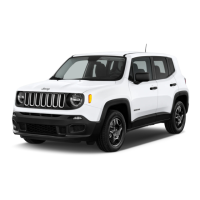
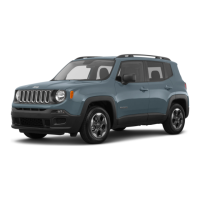
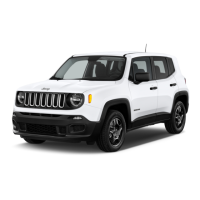

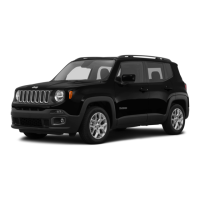


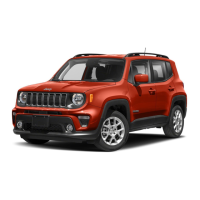
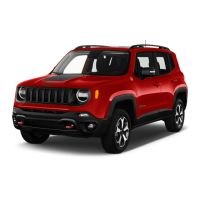
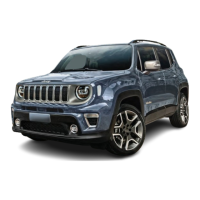
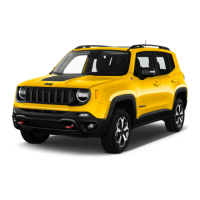

